
West face perimeter sheets in freefall: A visual record
During the earliest moments of collapse initiation. The west face is on the right, the north face on the left.Collapse initiation occurs somewhat evenly across fl 97 (98?).
The lowest row of fires are on fl 92.
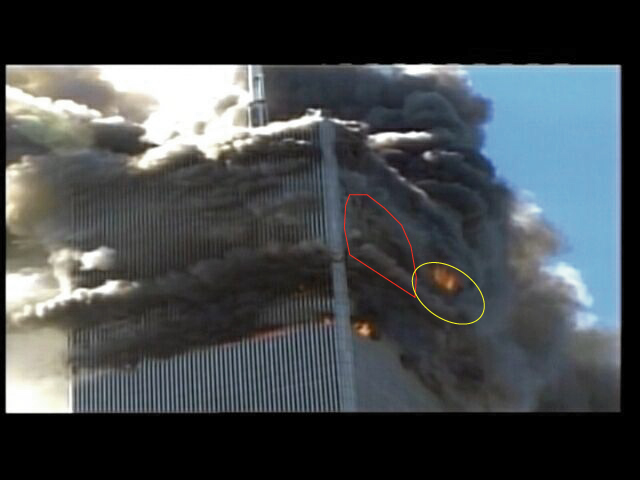
We trace the movement of at least 3 large perimeter sheets that seem to have detached from the red and yellow areas during the earliest moments of collapse initiation.
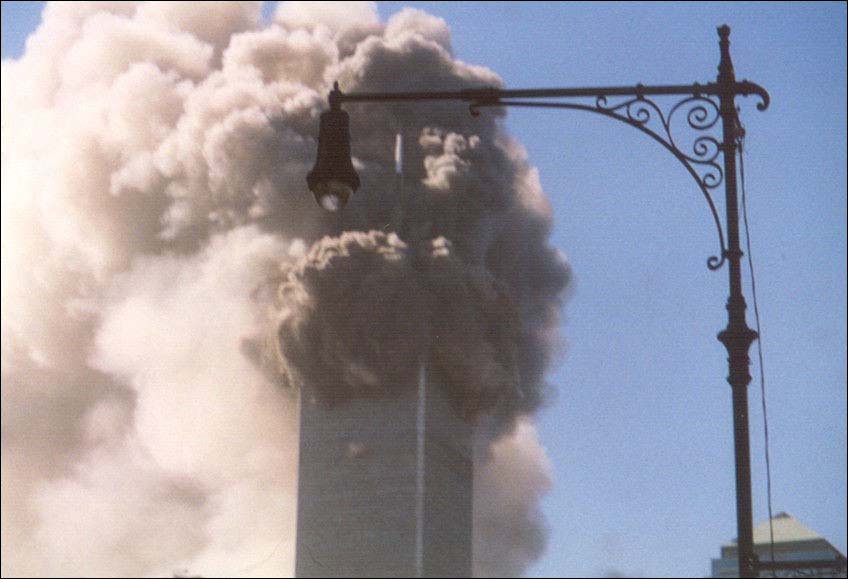
In the photo above we see large cloud of dust coming out of the west (right) side.
We know there is at least one large perimeter section in that dust and falling away from the building even though we can't see it yet.
The bottom of the large section starts to become visible in the next photo.
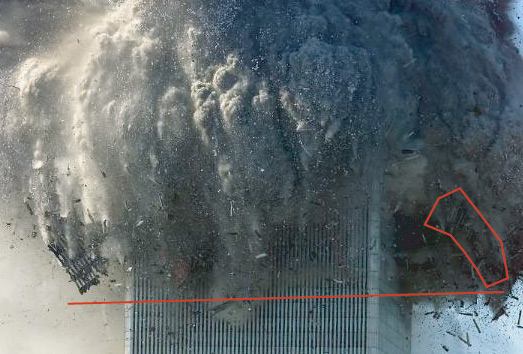
On the right we catch our first glimpse of the sheet.
On the left we see an assembly from the NE corner in freefall.
The red line in the next series of photos is meant to show that these two pieces stay even with each other as they fall to earth (the one on the right slightly trails the one on the left the entire fall).
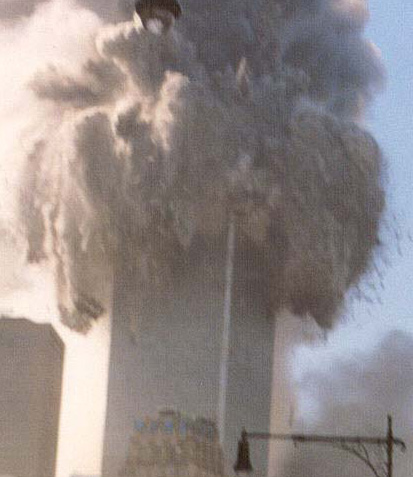
We can see large W face perimeter sections emerging from the dust in freefall on the right.
We can see the NE corner assembly in freefall on the left.
They fall at the same rate.
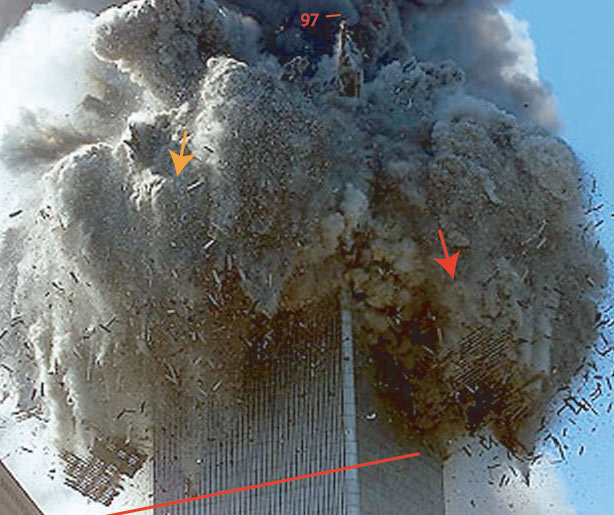
The large W face section is hiding at least one other large section behind it, as the next pictures show.
The orange arrow points to where a large perimeter sheet is falling from the north face. You cannot see it yet because it is hidden in the dust. We will see it emerge shortly.
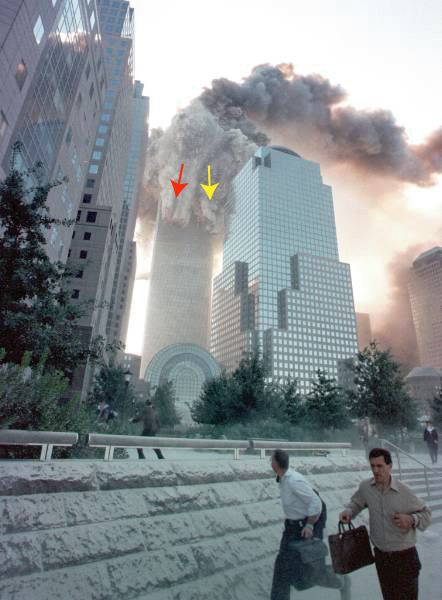
We can study the shape and features of the 25+ column west face perimeter section that fell away from the building during collapse initiation.
These images are taken from the first 10 seconds of this video
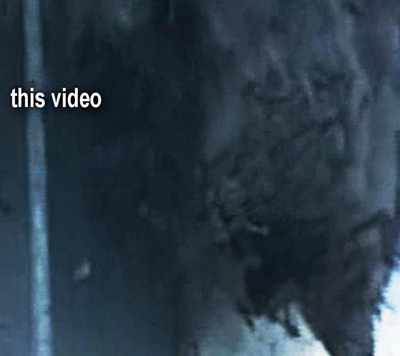
frame 203
In order to distinguish the borders and shape of the falling piece, it is best to view the dynamic relation between moving objects using video.The bottom and left edges start to reveal themselves in this frame.
Using this series of images we can see that both the bottom and left edge seem to be broken (severed, cut) along the straight lines highlighted in red below.
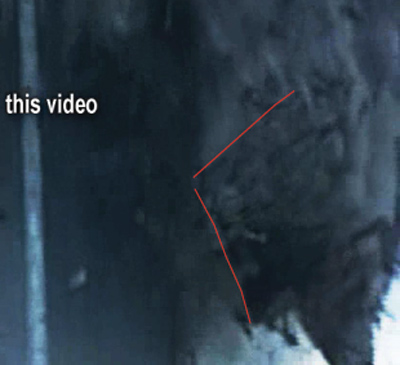
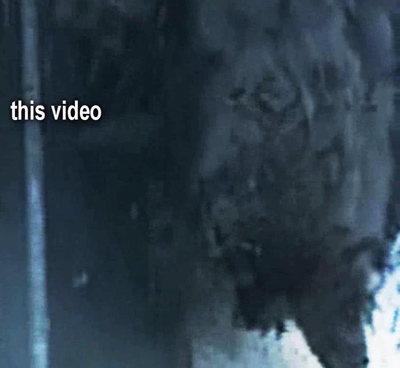
frame 207
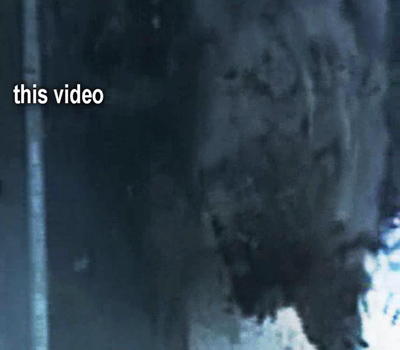
frame 210
Interestingly, we can begin to distinguish spandrels as shadowy lines. The bottom 2 rows are clearest to see.The leftmost edges of the spandrels become distinguishable in frame 210. This is even clearer when you view the process dynamically.
The pink arrows below point to the broken edges of consecutive spandrels. Notice how the breakage of at least 4 consecutive spandrels seems to occur along a straight vertical line.
The orange line highlights the bottom edge, which seems completely broken just below the lowest spandrel plate in a straight horizontal line.
Green lines highlight other borders of the piece emerging.
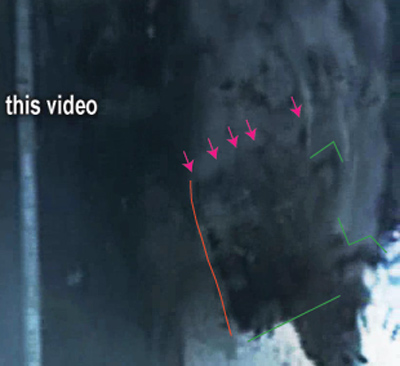
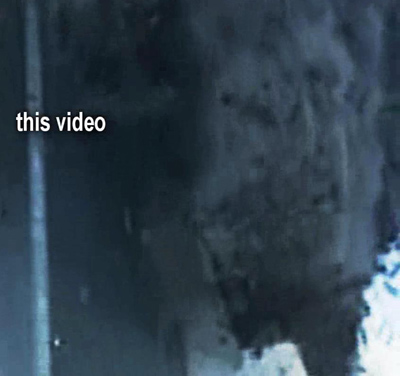
frame 213
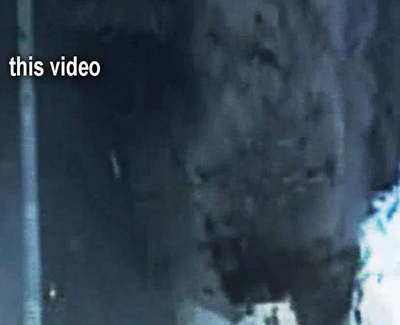
frame 218
We can use the shadowy traces of spandrel plates do get an idea of the height of the visible portion.Lines are traced below.
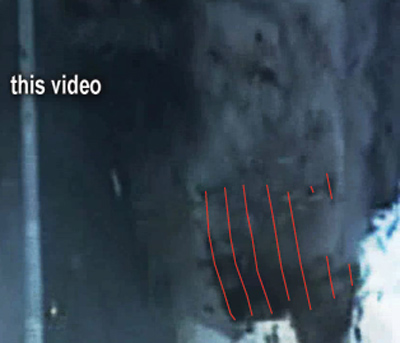
Multiple images confirm the piece to span at least 7 floors.
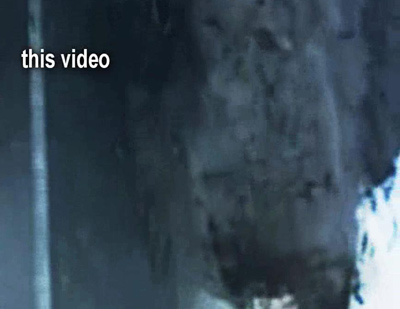
frame 223
The left edge shows itself more distinctly to be broken (severed, cut) along a straight vertical line. This seems apparent in the still images but it is more obvious in the video itself, where you can see the dynamics of the smoke along the edge.Distinguishable features in frame 223 are marked below.
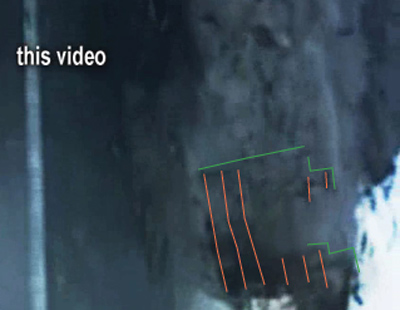
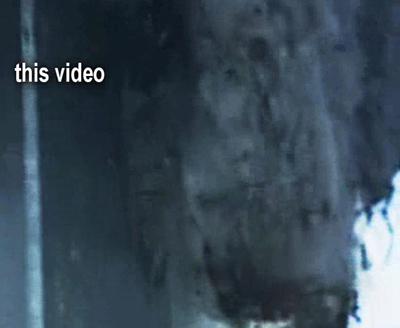
frame 225
The shape we consistently see the object to take is outlined below.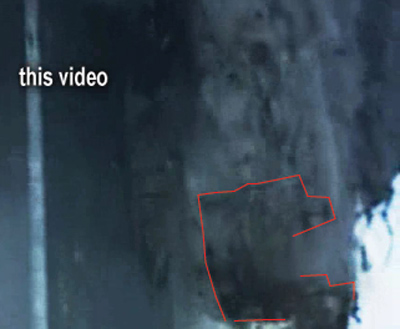
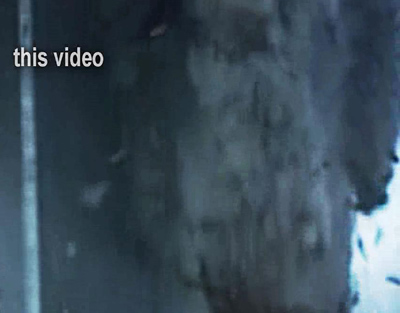
frame 233
As the sheet disappears from sight we catch a glimpse of the left edge as a thicker shadow.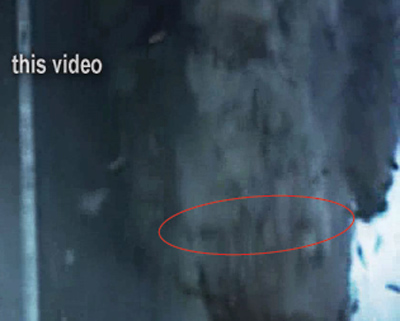
I'm quite certain that this piece is from the upper block and the bottom edge is the original line of failure of the west perimeter and that the lowest spandrel held the 98th (or 99th) floor.
We saw the entire NE corner assembly fail the same way: The 20+ column upper perimeter kicked outside of the lower perimeter along a straight horizontal line just below a spandrel plate here
I strongly suspect that these images show only one side of a longer sheet which curves around in a way that one side blocks the rest. There is evidence of curvature of the sheet with the bottom edge of the blocked portion (also along a straight line) slightly visible.
We can see that there are other falling sections behind the one visible before. These W face pieces fall evenly with the NE corner section.

We can see a different piece (blue arrow) falling behind the first (red).
There is yet another piece hiding behind the one marked in red.
We see it in the next photo (yellow).
And we see the large north face sheet emerge (orange). It is about 8 stories high as we shall see.
The NE corner piece is barely visible on the bottom right side of WTC7. It is just about to disappear. It still falls with the leading W face section and slightly leads it.
Notice that a new large N face section has emerged from the dust cloud. This piece was hiding in the N face falling dust in all the photos before now. Notice how it slightly trails the leading W face piece in the fall.
The large perimeter sections all fall together in the following order:
1) NE corner piece
2) leading W face section
3) Large N face section and trailing W face section
just as the above photo shows.
Some of the photos to follow confirm the order is correct.
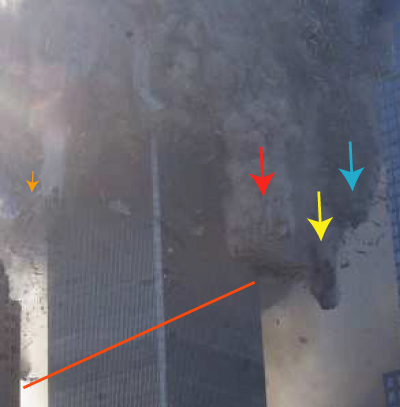
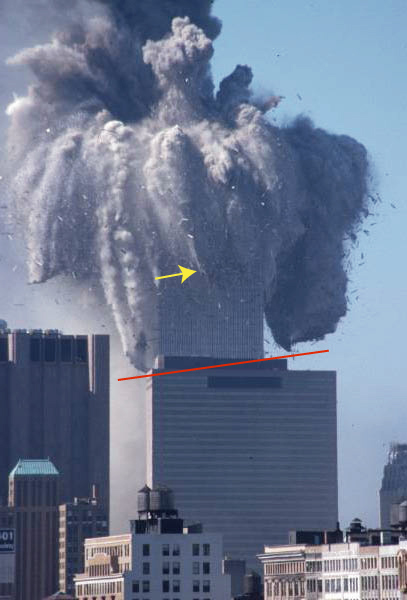
The next 2 photos confirm that the largest sheet from the west face (on the right) falls together with and slightly trails the NE corner assembly.
The large north sheet (yellow) lags behind them during the fall as shown.
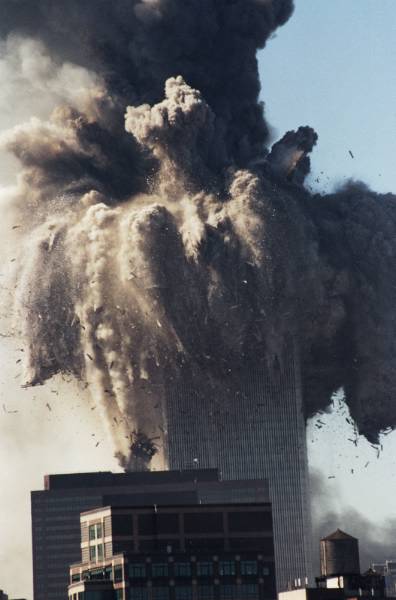
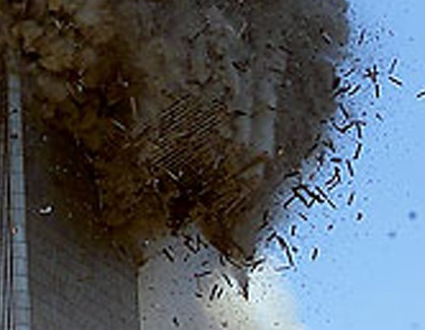
This is the largest west face sheet in freefall. Notice the blackened stains along it's lower part from fire damage.
You can see the same burn staims more clearly in the video clip linked below.
http://www.youtube.com/watch?v=1iT7mmmc-YY&feature=channel_page
You can see that the large west face falling sheet seems to be cut along a relatively straight line on it's lower edge. You can see this cut and the shape of this piece here
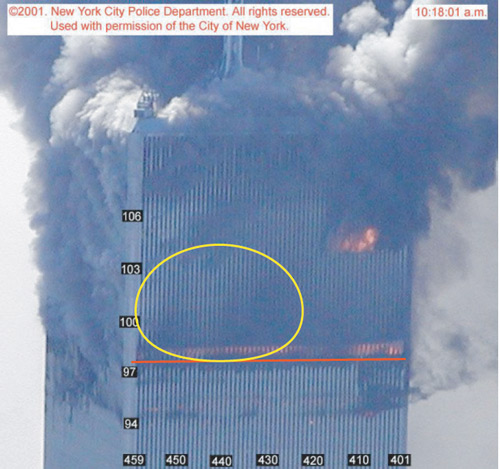
Perimeter failure during collapse initiation happened along the red line.
The falling sheet must have come from above or below this line.
Tracing it's trajectory backwards in video allows us to see it is from the region marked in yellow.
This is also consistent with the blackened burn stains.
You can see puffs form around the entire piece, top and bottom, during the earliest moments of collapse initiation in the video below
http://video.google.com/videoplay?docid=-68536067411074880&hl=en
Though you may not recognize it, you can just see the detached piece emerge from the dust at the bottom of the screen.
You can see it in still photos (the evolution of puffs around the piece) in the second picture series at the link below.
http://www.sharpprintinginc.com/911/index.php?module=pagemaster&PAGE_user_op=view_page&PAGE_id=68&MMN_position=154:154
Pretty amazing how the puffs form all around the large piece just before it detaches from the building. Can you see how the piece is carved out in the still photos?
In the next clip we get a very good view of the intensity of ejections along the top part of the piece. From the north, check out the subtle ejections at about fl 104, 105, west (right) face during the earliest detectable movement.
http://www.youtube.com/watch?v=Cz6VxxVdXuA&feature=related